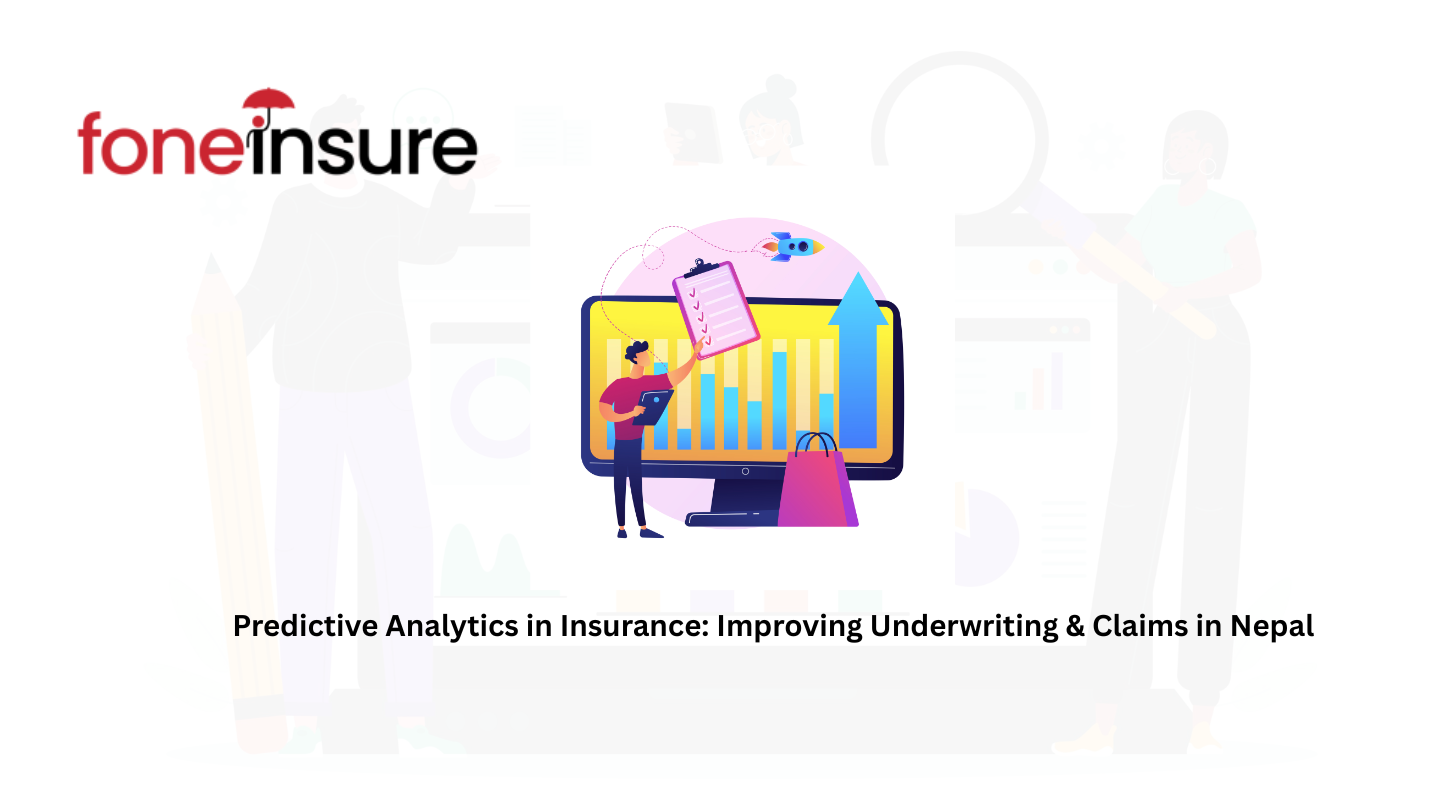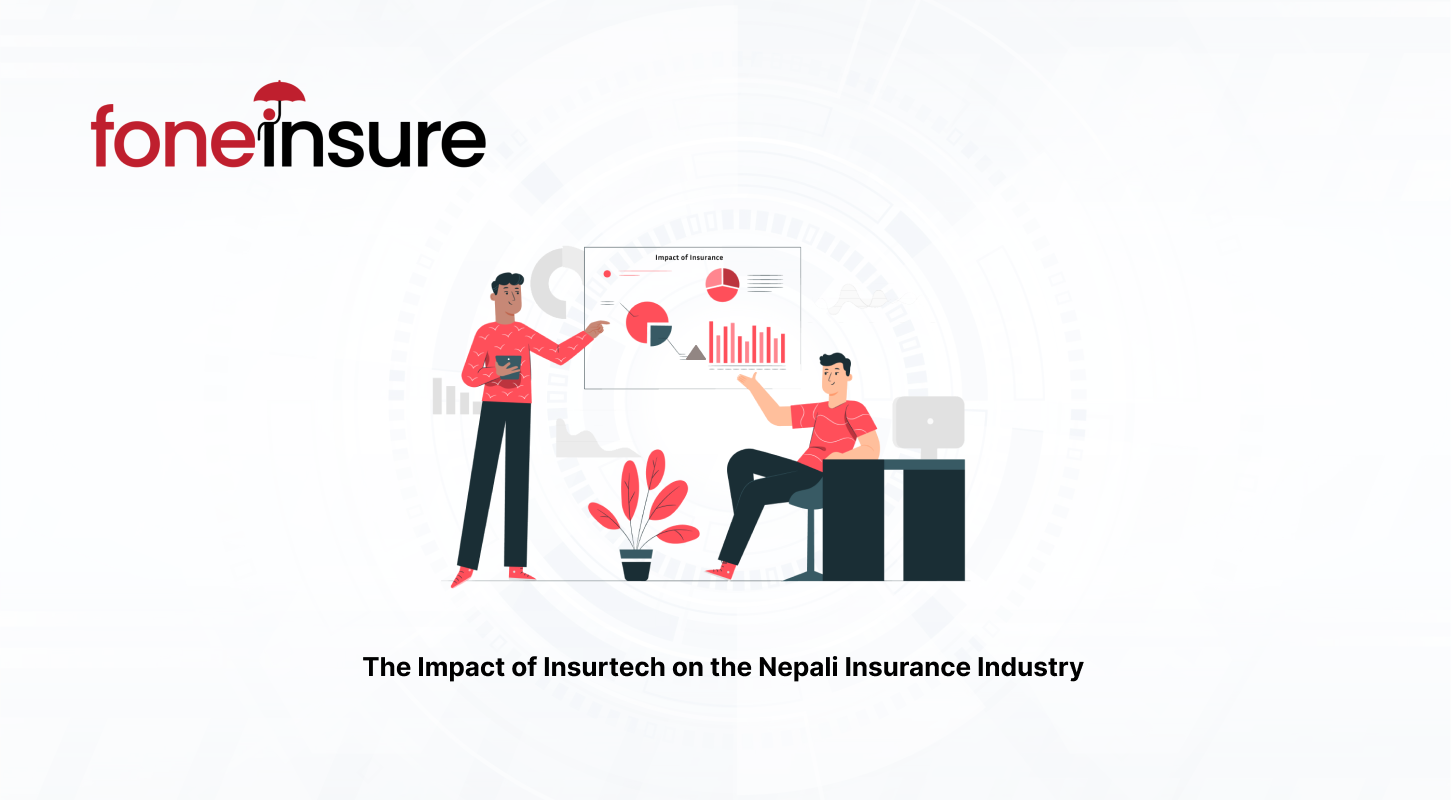
The insurance industry in Nepal, like in many parts of the world, is evolving rapidly. With a growing need for more efficient services and personalized products, predictive analytics is becoming a key tool in transforming the way insurance companies assess risks, process claims, and serve customers. As Nepali insurers look for ways to stay competitive in a market that is increasingly digital and customer-centric, the adoption of big data and machine learning can significantly improve both underwriting and claims management.
In this post, we’ll explore how predictive analytics will reshape the insurance landscape in Nepal, improving the efficiency of underwriting and claims, and offering more tailored solutions for Nepali consumers.
What is Predictive Analytics in Insurance?
At its core, predictive analytics is the use of historical data and advanced statistical models to predict future outcomes. In the context of insurance, it refers to the process of using data from a variety of sources—such as previous claims, consumer behavior, and external factors—to forecast potential risks, claim likelihood, and overall policyholder behavior.
In Nepal, this means leveraging local data such as climate patterns, traffic data, and health trends to provide more accurate risk assessments. By tapping into this data, insurers can make more informed decisions about underwriting, premium pricing, and claims management.
How Predictive Analytics Transforms Underwriting in Nepal ?
Underwriting in Nepal has traditionally been a manual, document-heavy process, often resulting in delays and inefficiencies. However, predictive analytics will change the way insurers assess risk, offering faster decisions and more personalized premium pricing.
1. Improved Risk Profiling
Predictive analytics enables insurance companies in Nepal to develop smarter risk profiles. Traditionally, underwriting in Nepal may have been based on simple factors like age, income, and health. With the use of predictive models, insurers can now incorporate more granular, local data, such as:
- Telematics data: In auto insurance, data from vehicles equipped with GPS trackers or telematics systems can provide insights into a driver’s habits (e.g., speeding, harsh braking) to better assess risk and tailor premiums.
- Climate and disaster risks: In Nepal, where natural disasters such as earthquakes, floods, and landslides are a significant concern, predictive models can help insurance companies assess the geographic risk and adjust premiums based on the likelihood of such events in a particular region.
- Health behavior data: With rising concerns about chronic diseases like diabetes and hypertension, insurers can analyze healthcare data to predict the likelihood of future claims related to health problems.
By incorporating these data points, insurers can offer more accurate pricing for policies and ensure that they are assessing risk more effectively, rather than relying on broad, one-size-fits-all categories.
2. Personalized Premiums
With predictive models, insurers in Nepal can offer usage-based insurance (UBI), where premiums are based on individual behaviors and characteristics. For example:
- Motor Insurance: Instead of charging a flat premium, insurers can track driving patterns through telematics and adjust premiums based on how safely the policyholder drives.
- Health Insurance: In the future, insurers may offer discounts or incentives for maintaining a healthy lifestyle, such as engaging in regular exercise or achieving fitness goals, using data from wearables or health apps.
This kind of personalization in premium pricing can encourage customers to adopt safer behaviors and improve overall risk management, benefiting both the insurer and the policyholder.
3. Speeding Up Underwriting Decisions
Nepali insurers, like their global counterparts, face growing pressure to offer quicker turnaround times for underwriting decisions. Predictive analytics makes this process much faster by automating data collection and analysis, enabling real-time pricing and underwriting. This can be especially important in fast-growing sectors like motor insurance, where a customer might expect immediate feedback and policy issuance.
For example, when someone applies for auto insurance, a predictive model can immediately analyze their driving history and assign an appropriate premium without the need for manual underwriting, making the process much more efficient.
Predictive Analytics in Claims: Enhancing Speed and Reducing Fraud
Claims management is often one of the most complex and costly parts of insurance in Nepal. Fraudulent claims, delays, and inaccurate assessments can increase operational costs and damage customer trust. Predictive analytics can help solve many of these challenges.
1. Faster Claims Resolution
One of the main benefits of predictive analytics in claims management is the ability to prioritize and expedite claims. For example, if an insurer in Nepal receives a claim related to a natural disaster like a flood, predictive models can assess whether the claim is likely to be valid based on patterns from past events. Claims that are more straightforward can be settled faster, while more complex cases can be flagged for deeper investigation.
2. Fraud Detection
Fraudulent claims have been a persistent problem in the Nepali insurance industry. Predictive analytics can help identify and reduce fraud by flagging suspicious claims early in the process. For example:
- Claim patterns: Predictive models can analyze whether a claim aligns with common patterns of fraudulent activity, such as multiple claims from the same location or from certain types of incidents.
- Geographic data: In flood or earthquake-prone regions of Nepal, predictive models can analyze whether a claim is consistent with the likelihood of disaster occurrence in that region.
By detecting fraud early, insurers can save costs and improve the accuracy of their claims assessments, making the process more fair and transparent for honest policyholders.
3. Enhanced Customer Experience
The ultimate goal of predictive analytics in claims is to improve the customer experience. In Nepal, where the insurance penetration rate is relatively low, customer satisfaction is key to gaining trust and retaining business. By using predictive analytics, insurers can:
- Proactively notify customers about the status of their claims or offer assistance based on predictive insights about potential issues.
- Provide real-time claims updates, helping to build customer trust and reduce anxiety.
- Personalize communication, ensuring that the customer feels valued and understood during the claims process.
The Future of Predictive Analytics in Nepal’s Insurance Sector
The use of predictive analytics is still in its early stages in Nepal, but the potential is enormous. As more local data becomes available and technology adoption grows, insurers in Nepal can look forward to even greater innovations.
1. AI and Machine Learning Integration
In the coming years, AI and machine learning will play an even greater role in the Nepali insurance industry. These technologies will allow for more advanced predictive models that can automatically adjust pricing and claims processing in real time. For instance, a Nepali health insurer might use AI to analyze data from a policyholder’s wearable device and predict future health claims, offering them tailored wellness programs in return for lower premiums.
2. Real-Time Data Collection
The increasing availability of smart devices, such as connected cars and wearables, will provide insurers with real-time data that can be used to dynamically adjust policies. For example, an auto insurer might adjust a policyholder’s premium based on their driving behavior in real-time, while a health insurer could offer discounts based on the number of steps a customer takes in a day.
3. Ethical and Privacy Concerns
As Nepali insurers adopt predictive analytics, the ethical use of customer data will become a crucial concern. Privacy laws in Nepal will need to evolve to ensure that personal data is being used transparently and responsibly. Insurers will need to maintain strict data security measures and ensure they have the necessary permissions to access sensitive personal data.
Conclusion: Why Nepali Insurers Should Embrace Predictive Analytics
The Nepali insurance industry is ripe for disruption, and predictive analytics offers an invaluable opportunity for insurers to stay competitive, improve risk assessment, and enhance customer satisfaction. By integrating advanced data science techniques into their operations, Nepali insurers can offer more personalized, efficient, and transparent services to policyholders.
As technology continues to advance, those insurers who embrace predictive analytics will not only enhance their operational efficiency but also establish stronger relationships with their customers, ultimately shaping the future of Nepal’s insurance market.
Final Thoughts
The future of insurance in Nepal is digital, data-driven, and customer-centric. By utilizing predictive analytics, insurers can stay ahead of the curve and deliver the services that Nepali customers need and deserve. Whether it’s speeding up claims processing, offering personalized premiums, or reducing fraud, predictive analytics is the tool that will drive the Nepali insurance market toward greater efficiency and customer satisfaction.
To further illustrate the practical applications of predictive analytics in insurance, I have developed three separate machine learning models using dummy datasets, each aimed at solving a key challenge in the industry:
- Risk Assessment Model: View on Kaggle
- Fraud Detection Model: View on Kaggle
- Premium Recommendation Model: View on Kaggle
Please note: All datasets used are synthetic and created solely for demonstration purposes. The model accuracies shown in these notebooks are based on dummy data and are intended to showcase the workflow, not reflect real-world performance.
These examples aim to highlight how such models can be adapted and implemented by Nepali insurers as more reliable and localized data becomes available.
By Utsal Krishna Tamrakar
Software Engineer





